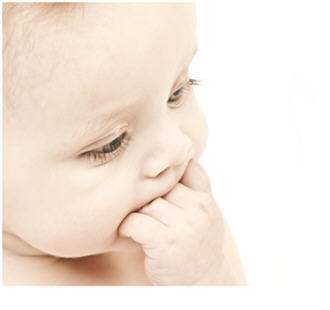Speech Disrupts Facial Attention in 6-Month-Olds Who Later Develop Autism
Reports new study in Biological Psychiatry
Philadelphia, PA, February 4, 2014—From birth, infants naturally show a preference for human contact and interaction, including faces and voices. These basic predispositions to social stimuli are altered in individuals diagnosed with autism spectrum disorders (ASD).
A new study published in Biological Psychiatry this week, from researchers at the Yale University School of Medicine, now reports that 6-month-old infants later diagnosed with autism divert their gaze from facial features when that face is speaking.
One of the best methods to examine autism in very young infants is the use of eye-tracking. This technology uses advanced video monitoring and special software that tracks and 'maps' exactly where the eyes were focused and for how long.
Dr. Frederick Shic and his colleagues used this method to examine how 6-month-old infants looked at videos of still, smiling, and speaking faces. The infants were later assessed at 3 years of age and divided into groups based on based on their diagnosis of ASD, other developmental delays, or typical development.
Infants who later developed ASD not only looked at all faces less than other infants, but also, when shown a face that was speaking, looked away from key facial features such as the eyes and mouth.
"These results suggest that the presence of speech disrupts typical attentional processing of faces in those infants later diagnosed with ASD," said Shic. "This is the first study to isolate an atypical response to speech as a specific characteristic in the first half year after birth that is associated with later emerging ASD."
These findings indicate that infants who later develop ASD have difficulty maintaining attention to relevant social information as early as 6 months of age, a phenomenon that could reduce the quality of their social and communicative exchanges with others and, consequently, the trajectory of their social development.
Autism typically can't be diagnosed until at least two years of age, but this and other studies confirm that abnormalities in behavior and attention can be detected as early as 6 months of age.
"It seems clear that brain changes related to autism appear much earlier than we traditionally diagnose this disorder," commented Dr. John Krystal, Editor of Biological Psychiatry. "This study elegantly illustrates that autism-related disturbances in social relatedness are present very early in life, shaping one's most fundamental social contacts."
These affected infants may be experiencing an altered social experience at a critical developmental point. The hope is that this and further research can help clarify how and when the developmental trajectory is altered in children who develop autism and, potentially, develop targeted interventions that could normalize their developmental processes.
ARTICLE:
"Speech Disturbs Face Scanning in 6-Month-Old Infants Who Develop Autism Spectrum Disorder" by Frederick Shic, Suzanne Macari, and Katarzyna Chawarska. Biological Psychiatry, Volume 75, Issue 3 (February 1, 2014),.doi: 10.1016/j.biopsych.2013.07.009; Elsevier.

